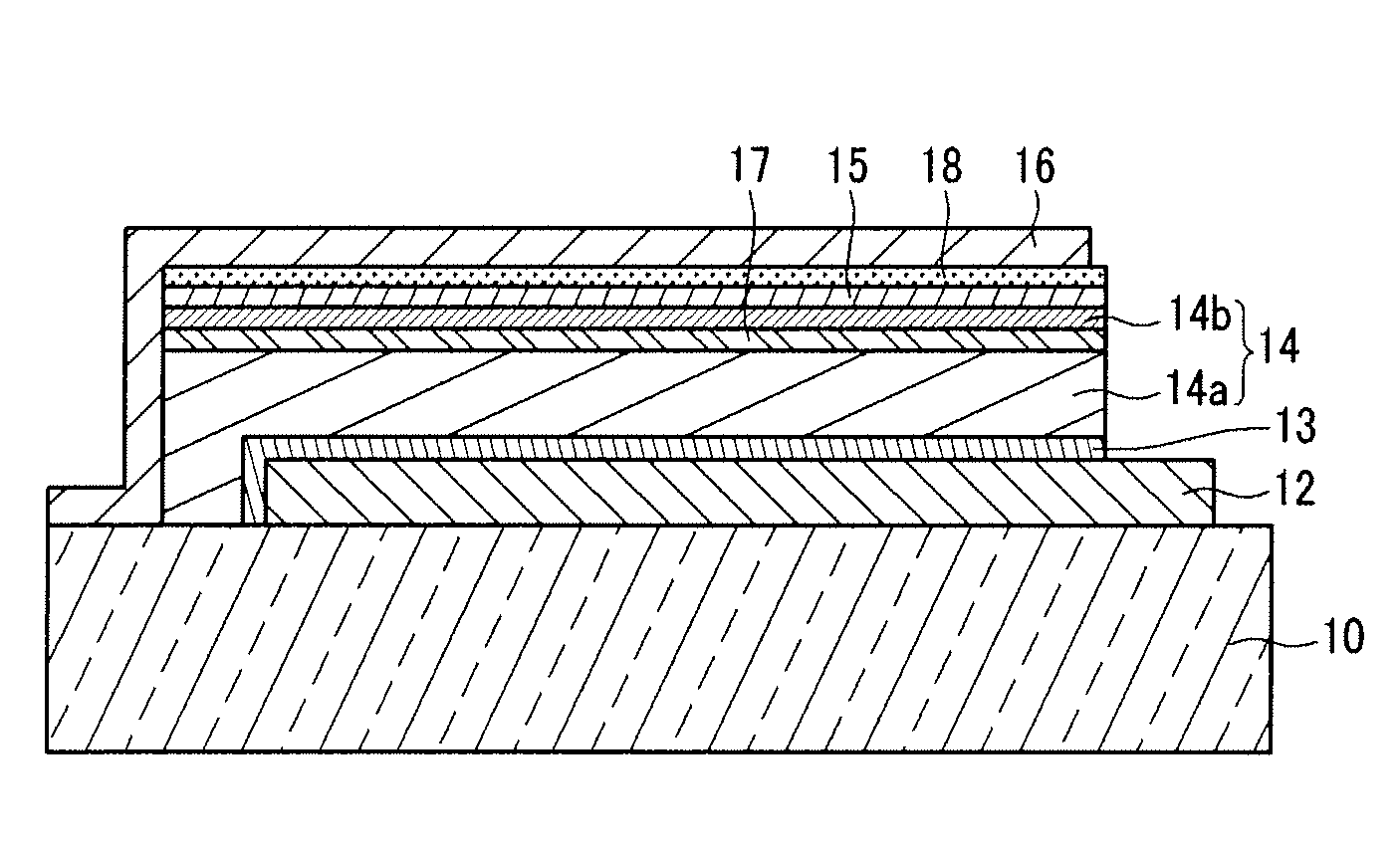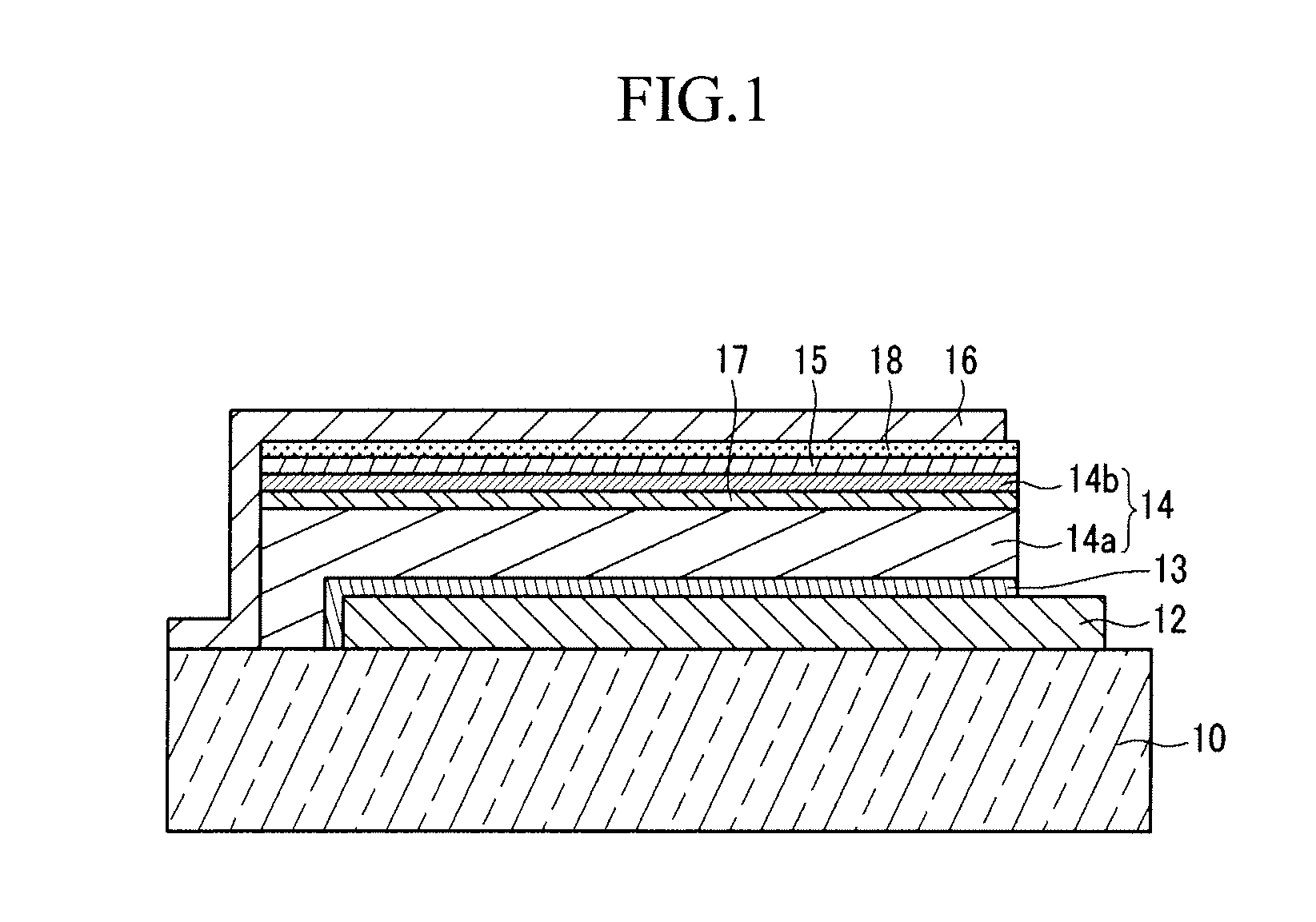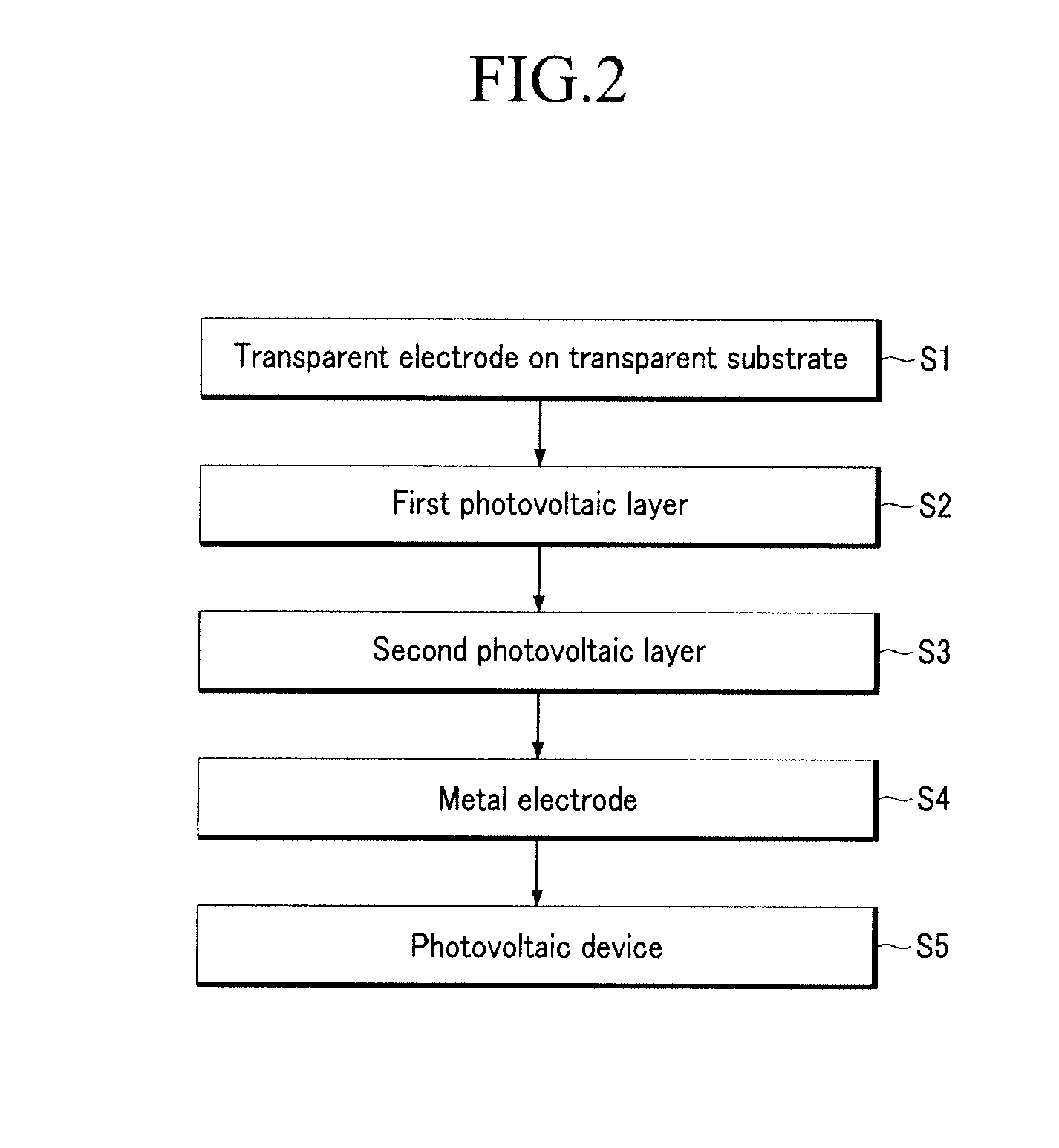Photovoltaic device and method of manufacturing the same
a photovoltaic and photovoltaic layer technology, applied in the field of photovoltaic devices, can solve the problems of affecting the environment when it is discarded, requiring a lot of energy during the process, and difficult to commercialize photovoltaic devices, and achieves the effect of preventing (or reducing) the deterioration of the electron conductivity of the surface-treated photovoltaic layer
- Summary
- Abstract
- Description
- Claims
- Application Information
AI Technical Summary
Benefits of technology
Problems solved by technology
Method used
Image
Examples
example 1
[0097]A transparent electrode made of indium tin oxide was disposed on a glass substrate. Then, a composition for a buffer layer was prepared by dissolving a mixture of polyethylene dioxythiophene (PEDOT) and poly(styrenesulfonate) (PSS) (1:1 weight ratio). The composition was then disposed on the transparent electrode by a spin coating method. The coating layer was dried at 100° C. in a vacuum oven for 30 minutes to form a buffer layer with a thickness of about 100 nm.
[0098]Next, a composition for forming a first photovoltaic layer was prepared by dissolving 20 mg of a pentacene derivative as a short-wavelength absorption compound (the pentacene derivation being bis(triisopropylsilylethynyl) pentacene (TIPS-pentacene)) and 20 mg of a fullerene derivative (PCBM) in 1 ml of toluene. Then, the composition was coated on the buffer layer by a spin coating method and dried to form a 100 nm-thick first photovoltaic layer. Then, the first photovoltaic layer was applied with plasma at a sou...
example 2
[0102]A transparent electrode made of indium tin oxide was disposed on a glass substrate. Then, a composition for forming a first buffer layer was prepared by dissolving a mixture of polyethylene dioxythiophene (PEDOT) and poly(styrenesulfonate) (PSS) (1:1 weight ratio) in deionized water on the transparent electrode. The composition was then disposed on the transparent electrode by a spin coating method and dried at 100° C. in a vacuum oven for 30 minutes to form a first buffer layer with a thickness of about 100 nm.
[0103]Then, a composition for forming a first photovoltaic layer was prepared by dissolving 20 mg of a pentacene derivative (bis(triisopropylsilylethynyl) pentacene (TIPS-pentacene)) as a short-wavelength absorption compound and 16 mg of fullerene in 2 ml of chlorobenzene. The composition was coated on the buffer layer by a spin coating method and dried to prepare a 120 nm-thick first photovoltaic layer.
[0104]Then, a composition for forming a second photovoltaic layer w...
example 3
[0108]A transparent electrode including indium tin oxide was disposed on a glass substrate. Then, a composition for forming a buffer layer was prepared by dissolving a mixture of polyethylene dioxythiophene (PEDOT) and poly(styrenesulfonate) (PSS) (1:1 weight ratio) in deionized water. The composition was coated by a spin coating method and dried at 100° C. in a vacuum oven for 30 minutes to dispose a buffer layer with a thickness of about 100 nm.
[0109]Next, a composition for forming a first photovoltaic layer was prepared by dissolving 20 mg of poly(2-methoxy-5-(3,7-dimethoxyoctyloxy)-1,4-phenylene-vinylene) (MDMO-PPV) as a short-wavelength absorption compound and 20 mg of PCBM in 1 ml of toluene. The composition was coated on the buffer layer by a spin coating method to dispose a 100 nm-thick first photovoltaic layer. The first photovoltaic layer was applied with plasma at a source output of 1 W under a nitrogen atmosphere for 30 seconds to perform a surface modifying treatment.
[0...
PUM
| Property | Measurement | Unit |
|---|---|---|
| thickness | aaaaa | aaaaa |
| wavelength | aaaaa | aaaaa |
| thickness | aaaaa | aaaaa |
Abstract
Description
Claims
Application Information
 Login to View More
Login to View More - R&D
- Intellectual Property
- Life Sciences
- Materials
- Tech Scout
- Unparalleled Data Quality
- Higher Quality Content
- 60% Fewer Hallucinations
Browse by: Latest US Patents, China's latest patents, Technical Efficacy Thesaurus, Application Domain, Technology Topic, Popular Technical Reports.
© 2025 PatSnap. All rights reserved.Legal|Privacy policy|Modern Slavery Act Transparency Statement|Sitemap|About US| Contact US: help@patsnap.com



